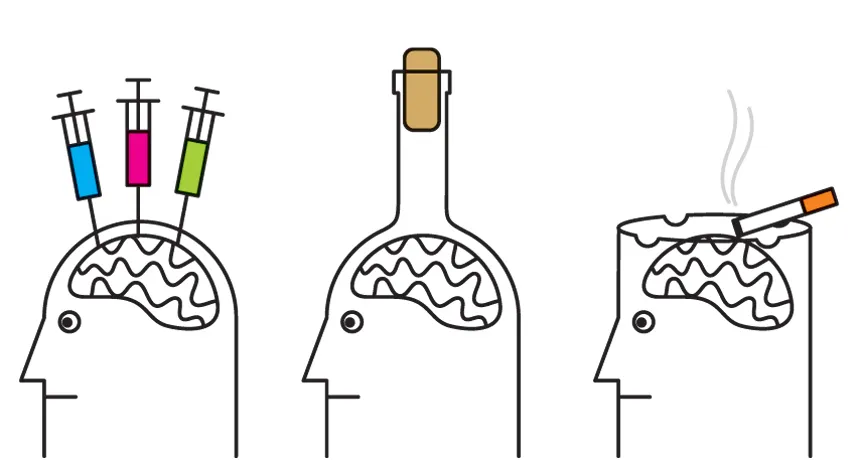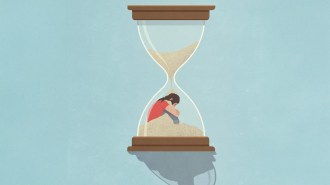Addiction showcases the brain’s flexibility
The brain has remarkable plasticity in response to drugs of abuse

Each addicted brain is different, depending on the drug of abuse, genetics, activity and more. Addiction is a difficult and highly individualistic disease that shows just how much our brains can change.
spline_x/Shutterstock
- More than 2 years ago
Every day sees a new research article on addiction, be it cocaine, heroin, food or porn. Each one takes a specific angle on how addiction works in the brain. Perhaps it’s a disorder of reward, with drugs hijacking a natural system that is meant to respond to food, sex and friendship. Possibly addiction is a disorder of learning, where our brains learn bad habits and responses. Maybe we should think of addiction as a combination of an environmental stimulus and vulnerable genes. Or perhaps it’s an inappropriate response to stress, where bad days trigger a relapse to the cigarette, syringe or bottle.
None of these views are wrong. But none of them are complete, either. Addiction is a disorder of reward, a disorder of learning. It has genetic, epigenetic and environmental influences. It is all of that and more. Addiction is a display of the brain’s astounding ability to change — a feature called plasticity — and it showcases what we know and don’t yet know about how brains adapt to all that we throw at them.
“A lot of people think addiction is what happens when someone finds a drug to be the most rewarding thing they’ve ever experienced,” says neuroscientist George Koob, director of the National Institute on Alcohol Abuse and Alcoholism in Bethesda, Md. “But drug abuse is not just feeling good about drugs. Your brain is changed when you misuse drugs. It is changed in ways that perpetuate the problem.” The changes associated with drug use affect how addicts respond to drug cues, like the smell of a cigarette or the sight of a shot of vodka. Drug abuse also changes how other rewards, such as money or food are processed, decreasing their relative value.
Before researchers began to focus on long-term brain changes, they focused on dopamine, a chemical messenger in the brain that is released from neurons. It plays an important role in movement control, but also increases in response to pleasurable things such as food, sex or drugs. “I think initially back in the mid-‘80s we believed that drug reward occurred because all addictive drugs increase dopamine,” explains Paul Kenny, a neurobiologist at the Icahn School of Medicine at Mount Sinai in New York City.
Kenny says that at first “it was a small leap to say a drug is pleasurable because it increases dopamine, and we therefore understand addiction.” But more research has shown that “dopamine is not really a measure for pleasure. Instead, it might be a measure of value. Now, scientists are willing to admit we have no idea where reward comes from or how we experience pleasure.”
But this doesn’t mean that dopamine doesn’t have a place in addiction. As someone takes a drug over and over, dopamine and other systems in the brain respond with plasticity — that is, those systems adapt to the presence of the drug. Receptors that control the response to chemicals like dopamine change concentration. Connections between brain cells and between different areas of the brain strengthen and weaken. The birth of new neurons decreases. The initial effects of that first hit are also crucial, Koob says, causing “a whole series of plastic changes to those receptors, to the brain cells that connect with them. The more you do it, the more it becomes ingrained and permanent.”
Some of the changes, notes Shannon Gourley, a neuroscientist at Emory University in Atlanta, “accelerate habit formation, which is a form of learning.” A habit can be a good thing. Making a habit out of brushing your teeth means you can focus on other things. But, Gourley says, “habit formation can also be maladaptive if the habit is ingesting a drug of abuse.”
Learning has been a focus of addiction research for more than a decade. Marina Wolf, a neuroscientist at Rosalind Franklin University of Medicine and Science in North Chicago is one of a group of scientists who pioneered the idea of addiction as a form of maladaptive plasticity — the brain “learning” differently in the presence of addictive substances. But learning, Wolf says, is a loose term. “Let’s say a person learns about riding a unicycle and also learns about taking cocaine. Cocaine’s effects in the brain may lead to stronger learning about the drug, although there are undoubtedly similarities at some levels. Later, when presented with a cue about unicycles or about cocaine, the person will retrieve the specific memory. The important question is: What does the individual do with the memory that is retrieved? The critical difference may lie in the ease with which a memory or cue is translated in to action.” So while memories of your unicycle riding days might merely be pleasant, memories associated with cocaine might trigger powerful cravings.
In this way, Kenny explains, “any behavioral disorder is exactly the same: It involves learning and plasticity. The problem we have with addiction is that we still don’t understand what connections in the brain are doing.” Addiction and other disorders are made more complex by genetics: Certain genes may make some people more vulnerable to addiction than others. The genetic differences are further complicated by the environment and stresses that people are exposed to throughout their lives.
Scientists are slowly learning more about how addicts’ brains differ from those of people without drug addictions. “People think about addiction in a very simplistic way, like a blood test or a urine test could tell you if someone was addicted or not,” says Rita Goldstein, an addiction neuroimaging researcher at Mount Sinai. “But it’s such a complex disorder I don’t think there ever will be one test that will be 100 percent accurate.” She does note that addicts to have some reliable and replicable decreases in gray matter in brain regions important to learning and reward processes. Some deficits in decision-making and emotional self-awareness are present even when there are no drugs available. But, Goldstein notes, “it’s always the chicken-and-egg question: Are these deficits there before addiction developed or did they develop with addiction?”
Addiction involves pleasure and pain, motivation and impulsivity. It has roots in genetics and in environment. Every addict is different, and there are many, many things that scientists do not yet know. But one thing is certain: The only overall explanation for addiction is that the brain is adapting to its environment. This plasticity takes place on many levels and impacts many behaviors, whether it is learning, reward or emotional processing. If the question is how we should think of addiction, the answer is from every angle possible.







